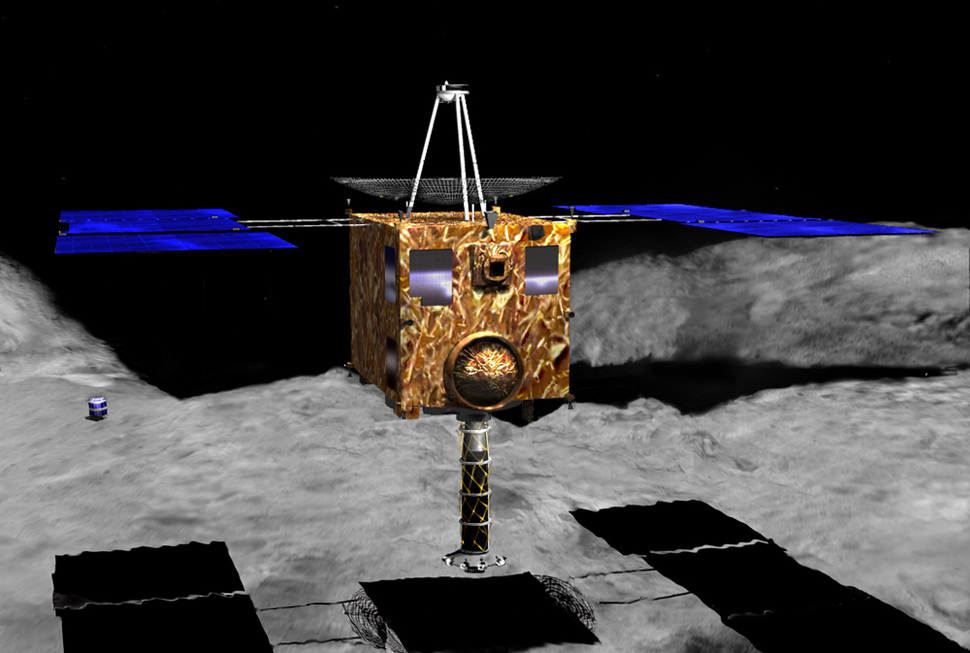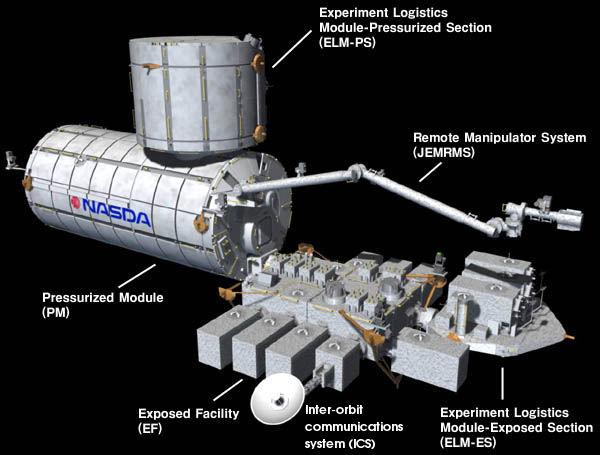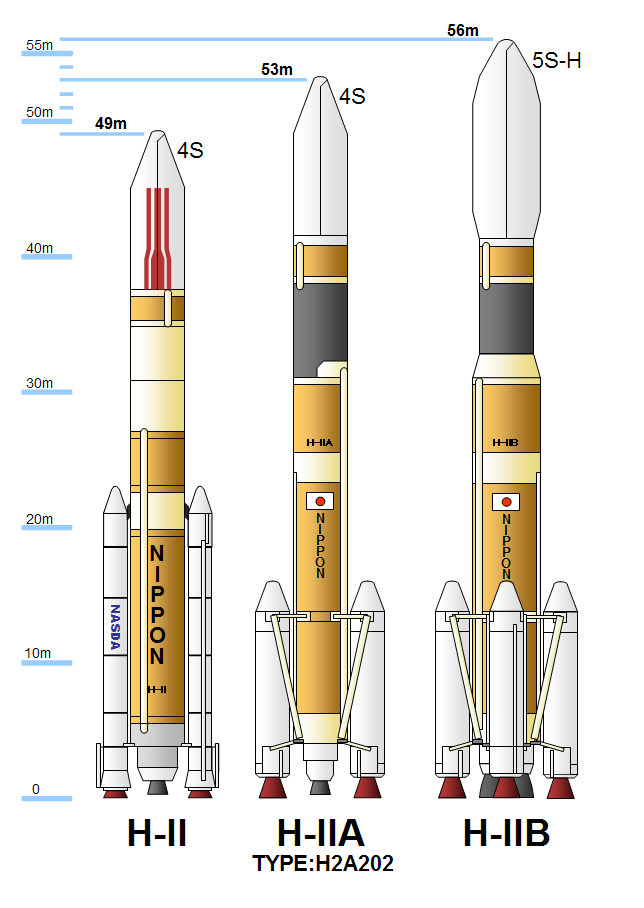|
MUSES-C
was a robotic spacecraft developed by the Japan Aerospace Exploration Agency (JAXA) to return a sample of material from a small near-Earth asteroid named 25143 Itokawa to Earth for further analysis. ''Hayabusa'', formerly known as MUSES-C for Mu Space Engineering Spacecraft C, was launched on 9 May 2003 and rendezvoused with Itokawa in mid-September 2005. After arriving at Itokawa, ''Hayabusa'' studied the asteroid's shape, spin, topography, color, composition, density, and history. In November 2005, it landed on the asteroid and collected samples in the form of tiny grains of asteroidal material, which were returned to Earth aboard the spacecraft on 13 June 2010. The spacecraft also carried a detachable minilander, ''MINERVA'', which failed to reach the surface. Mission firsts NASA's ''Galileo'' and ''NEAR Shoemaker'' spacecraft had visited asteroids before, but the ''Hayabusa'' mission was the first one to return an asteroid sample to Earth for analysis. In addition, ... [...More Info...] [...Related Items...] OR: [Wikipedia] [Google] [Baidu] |
Hayabusa Hover
was a robotic spacecraft developed by the Japan Aerospace Exploration Agency (JAXA) to Sample return mission, return a sample of material from a small near-Earth asteroid named 25143 Itokawa to Earth for further analysis. ''Hayabusa'', formerly known as MUSES-C for Mu Space Engineering Spacecraft C, was launched on 9 May 2003 and Space rendezvous, rendezvoused with Itokawa in mid-September 2005. After arriving at Itokawa, ''Hayabusa'' studied the asteroid's shape, spin, topography, color, composition, density, and history. In November 2005, it landed on the asteroid and collected samples in the form of tiny grains of asteroidal material, which were returned to Earth aboard the spacecraft on 13 June 2010. The spacecraft also carried a detachable minilander, ''MINERVA (spacecraft), MINERVA'', which failed to reach the surface. Mission firsts NASA's ''Galileo (spacecraft), Galileo'' and ''NEAR Shoemaker'' spacecraft had visited asteroids before, but the ''Hayabusa'' mission w ... [...More Info...] [...Related Items...] OR: [Wikipedia] [Google] [Baidu] |
Hayabusa IAC 2010
was a robotic spacecraft developed by the Japan Aerospace Exploration Agency (JAXA) to return a sample of material from a small near-Earth asteroid named 25143 Itokawa to Earth for further analysis. ''Hayabusa'', formerly known as MUSES-C for Mu Space Engineering Spacecraft C, was launched on 9 May 2003 and rendezvoused with Itokawa in mid-September 2005. After arriving at Itokawa, ''Hayabusa'' studied the asteroid's shape, spin, topography, color, composition, density, and history. In November 2005, it landed on the asteroid and collected samples in the form of tiny grains of asteroidal material, which were returned to Earth aboard the spacecraft on 13 June 2010. The spacecraft also carried a detachable minilander, ''MINERVA'', which failed to reach the surface. Mission firsts NASA's ''Galileo'' and ''NEAR Shoemaker'' spacecraft had visited asteroids before, but the ''Hayabusa'' mission was the first one to return an asteroid sample to Earth for analysis. In addition, ... [...More Info...] [...Related Items...] OR: [Wikipedia] [Google] [Baidu] |
25143 Itokawa
25143 Itokawa (provisional designation ) is a sub-kilometer near-Earth object of the Apollo group and also a potentially hazardous asteroid. It was discovered by the LINEAR program in 1998 and later named after Japanese rocket engineer Hideo Itokawa. The peanut-shaped S-type asteroid has a rotation period of 12.1 hours and measures approximately in diameter. Due to its low density and high porosity, Itokawa is considered to be a rubble pile, consisting of numerous boulders of different sizes rather than of a single solid body. It was the first asteroid to be the target of a sample-return mission, of the Japanese space probe ''Hayabusa'', which collected more than 1500 regolith dust particles from the asteroid's surface in 2005. Since its return to Earth in 2010, the mineralogy, petrography, chemistry, and isotope ratios of these particles have been studied in detail, providing insights into the evolution of the Solar System. Itokawa was the smallest asteroid to be photograph ... [...More Info...] [...Related Items...] OR: [Wikipedia] [Google] [Baidu] |
MINERVA (spacecraft)
MINERVA (MIcro-Nano Experimental Robot Vehicle for Asteroid) are a series of rover (space exploration), rovers developed by the Japanese space agency JAXA for the purpose of exploring asteroid surfaces. The first MINERVA was part of the ''Hayabusa'' mission, and MINERVA-II are a series of three rovers for ''Hayabusa2''. On 12 November 2005, MINERVA rover was deployed from Hayabusa orbiter with aim to land on asteroid 25143 Itokawa. However, the landing failed as MINERVA missed the asteroid and ended up on heliocentric orbit. On 21 September 2018, first two MINERVA-II rovers successfully landed on asteroid 162173 Ryugu.They Made It! Japan's Two Hopping Rovers Successfully Land on Asteroid Ryugu Meghan Bartels, ''Space.com''. 22 September 2018. ... [...More Info...] [...Related Items...] OR: [Wikipedia] [Google] [Baidu] |
JAXA
The is the Japanese national air and space agency. Through the merger of three previously independent organizations, JAXA was formed on 1 October 2003. JAXA is responsible for research, technology development and launch of satellites into orbit, and is involved in many more advanced missions such as asteroid exploration and possible human exploration of the Moon. Its motto is ''One JAXA'' and its corporate slogan is ''Explore to Realize'' (formerly ''Reaching for the skies, exploring space''). History On 1 October 2003, three organizations were merged to form the new JAXA: Japan's Institute of Space and Astronautical Science (ISAS), the National Aerospace Laboratory of Japan (NAL), and National Space Development Agency of Japan (NASDA). JAXA was formed as an Independent Administrative Institution administered by the Ministry of Education, Culture, Sports, Science and Technology (MEXT) and the Ministry of Internal Affairs and Communications (MIC). Before the mer ... [...More Info...] [...Related Items...] OR: [Wikipedia] [Google] [Baidu] |
Japan Aerospace Exploration Agency
The is the Japanese national Aeronautics, air and space agency. Through the merger of three previously independent organizations, JAXA was formed on 1 October 2003. JAXA is responsible for research, technology development and launch of satellites into Geocentric orbit, orbit, and is involved in many more advanced missions such as asteroid exploration and possible human exploration of the Moon. Its motto is ''One JAXA'' and its corporate slogan is ''Explore to Realize'' (formerly ''Reaching for the skies, exploring space''). History On 1 October 2003, three organizations were merged to form the new JAXA: Japan's Institute of Space and Astronautical Science (ISAS), the National Aerospace Laboratory of Japan (NAL), and National Space Development Agency of Japan (NASDA). JAXA was formed as an Independent Administrative Institution administered by the Ministry of Education, Culture, Sports, Science and Technology (MEXT) and the Ministry of Internal Affairs and Communications ... [...More Info...] [...Related Items...] OR: [Wikipedia] [Google] [Baidu] |
Institute Of Space And Astronautical Science
, or ISAS, is a Japanese national research organization of astrophysics using rockets, astronomical satellites and interplanetary probes which played a major role in Japan's space development. Established as part of the University of Tokyo in 1964, the institute spun off from the university to come under direct purview of the Ministry of Education. Since 2003, it is a division of Japan Aerospace Exploration Agency (JAXA). History The ISAS originated as part of the Institute of Industrial Science of the University of Tokyo, where Hideo Itokawa experimented with miniature solid-fuel rockets ( Pencil Rocket and ) in the 1950s. This experimentation eventually led to the development of the Κ (''Kappa'') sounding rocket, which was used for observations during the International Geophysical Year (IGY). By 1960, the Κ-8 rocket had reached an altitude of 200 km. In 1964, the rocket group and the ''Institute of Aeronautics'', along with scientific ballooning team, were ... [...More Info...] [...Related Items...] OR: [Wikipedia] [Google] [Baidu] |
Woomera, Australia
Woomera, unofficially Woomera village, is the domestic area of RAAF Base Woomera. Woomera village has always been a Defence-owned and operated facility. The village is located on the traditional lands of the Kokatha people in the Far North region of South Australia, but is on Commonwealth-owned land and within the area designated as the Woomera Prohibited Area (WPA). The village is approximately north of Adelaide. In common usage, "Woomera" refers to the wider RAAF Woomera Range Complex (WRC), a large Australian Defence Force aerospace and systems testing range (the Woomera Test Range (WTR)) covering an area of approximately and is operated by the Royal Australian Air Force. Woomera "village" is part of RAAF Base Woomera which, along with the Woomera Test Range (WTR), forms the larger entity known as the Woomera Range Complex (WRC), promulgated by Chief of Air Force (CAF) in June 2014. As at the the Woomera Village had a population of 146, and its usual population varie ... [...More Info...] [...Related Items...] OR: [Wikipedia] [Google] [Baidu] |
NEAR Shoemaker
''Near Earth Asteroid Rendezvous – Shoemaker'' (''NEAR Shoemaker''), renamed after its 1996 launch in honor of planetary scientist Eugene Merle Shoemaker, Eugene Shoemaker, was a Robotic spacecraft, robotic space probe designed by the Johns Hopkins University Applied Physics Laboratory for NASA to study the near-Earth asteroid 433 Eros, Eros from close orbit over a period of a year. It was the first spacecraft to orbit an asteroid and land on it successfully. In February 2000, the mission closed in on the asteroid and orbited it. On February 12, 2001, Shoemaker touched down on the asteroid and was terminated just over two weeks later. The primary scientific objective of ''NEAR'' was to return data on the bulk properties, composition, mineralogy, morphology, internal mass distribution, and magnetic field of Eros. Secondary objectives include studies of regolith properties, interactions with the solar wind, possible current activity as indicated by dust or gas, and the asteroi ... [...More Info...] [...Related Items...] OR: [Wikipedia] [Google] [Baidu] |
Spacecraft Attitude Control
Spacecraft attitude control is the process of controlling the orientation of a spacecraft (vehicle or satellite) with respect to an inertial frame of reference or another entity such as the celestial sphere, certain fields, and nearby objects, etc. Controlling vehicle attitude requires actuators to apply the torques needed to orient the vehicle to a desired attitude, and algorithms to command the actuators based on the current attitude and specification of a desired attitude. Before and during attitude control can be performed, spacecraft attitude determination must be performed, which requires sensors for absolute or relative measurement. The broader integrated field that studies the combination of sensors, actuators and algorithms is called ''guidance, navigation and control'', which also involves non-attitude concepts, such as position determination and navigation. Motivation A spacecraft's attitude must typically be stabilized and controlled for a variety of reasons. It ... [...More Info...] [...Related Items...] OR: [Wikipedia] [Google] [Baidu] |
Autonomous Robot
An autonomous robot is a robot that acts without recourse to human control. Historic examples include space probes. Modern examples include self-driving Robotic vacuum cleaner, vacuums and Self-driving car, cars. Industrial robot, Industrial robot arms that work on assembly lines inside factories may also be considered autonomous robots, though their Agency (psychology), autonomy is restricted due to a highly structured environment and their inability to Robot locomotion, locomote. Components and criteria of robotic autonomy Self-maintenance The first requirement for complete physical autonomy is the ability for a robot to take care of itself. Many of the battery-powered robots on the market today can find and connect to a charging station, and some toys like Sony's ''Aibo'' are capable of self-docking to charge their batteries. Self-maintenance is based on "proprioception", or sensing one's own internal status. In the battery charging example, the robot can tell propriocep ... [...More Info...] [...Related Items...] OR: [Wikipedia] [Google] [Baidu] |
Heliocentric Orbit
A heliocentric orbit (also called circumsolar orbit) is an orbit around the barycenter of the Solar System, which is usually located within or very near the surface of the Sun. All planets, comets, and asteroids in the Solar System, and the Sun itself are in such orbits, as are many artificial probes and pieces of debris. The moons of planets in the Solar System, by contrast, are not in heliocentric orbits, as they orbit their respective planet (although the Moon has a convex orbit around the Sun). The barycenter of the Solar System, while always very near the Sun, moves through space as time passes, depending on where other large bodies in the Solar System, such as Jupiter and other large gas planets, are located at that time. A similar phenomenon allows the detection of exoplanets by way of the radial-velocity method. The ''helio-'' prefix is derived from the Greek word "ἥλιος", meaning "Sun", and also Helios, the personification of the Sun in Greek mythology. ... [...More Info...] [...Related Items...] OR: [Wikipedia] [Google] [Baidu] |








